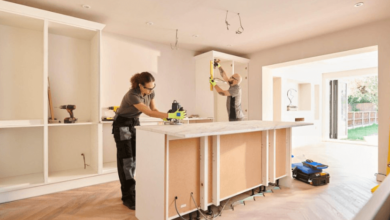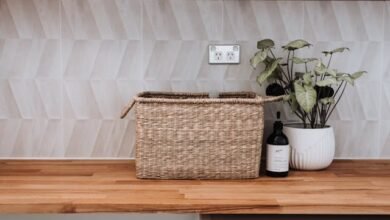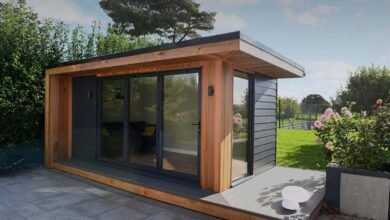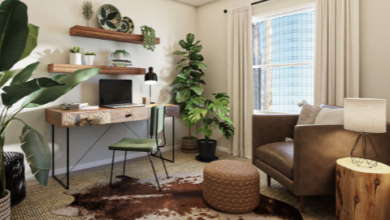Hotel mattresses: How to choose between cold foam, latex, or pocket spring for optimal comfort

Guests don’t write five-star reviews because the lobby smelled nice. They rave when the bed disappears beneath them, motion is quiet, and they wake up pain free. That’s why choosing the right hotelmatrassen is a strategic decision, not a line item. The core question: should you specify cold foam (HR foam), latex, or pocket spring? Each material behaves differently under real world hospitality conditions think high turnover, mixed body types, climate swings, and rigorous housekeeping cycles. Below, you’ll find a practical, operations first guide from Bremafa to help you pick confidently and keep your rooms consistent for years.
Start with outcomes, not materials
Before you compare specs, lock the experience you want to standardize: edge stability for easy ingress, quiet pressure relief for couples, temperature control across seasons, and predictable durability under heavy occupancy. When you benchmark these outcomes first, the choice of hotel mattresses becomes clearer because you’re matching material behavior to business goals, not chasing brochure language.
Cold foam (HR foam): Stable, breathable, and budget predictable
Cold foam often called HR (high resilience) foam offers a balanced feel: supportive at the core, gently conforming at the surface. It resists “valleys” better than commodity PU foams, handles point loads well (knees, elbows), and breathes thanks to its open cell structure. For hotels, that translates to reliable night to night comfort with fewer early replacements. Operationally, HR foam is a friend to housekeeping. It’s lighter than latex, so flips and rotations are easier. It also pairs well with zip off covers and thin toppers for quick refresh. If your brand standard aims for a medium profile with calm motion isolation, HR foam hotel mattresses are often the most cost efficient starting point, especially in climates with moderate humidity.
See also: Full Bathroom Installation: Elevate Your Home with Expert Solutions
Latex: Premium elasticity and natural pressure relief
Latex natural or blended pushes back elastically rather than “hugging” like memory foam. Guests feel buoyant support, fast response, and excellent pressure distribution at shoulders and hips. Latex is naturally breathable (pincore ventilation), resilient against body impressions, and hypoallergenic when encased in a sealed cover. From an operations angle, latex cores are heavier and require clear handling protocols two person turns, reinforced handles, and rotation markers. When implemented correctly, latex hotel mattresses deliver a distinctly “upscale” sensation with long service life, making them a strong fit for premium room categories or warm, humid regions where airflow and mold resistance matter.
Pocket spring: Zoned support and classic “hotel” feel
Individually wrapped coils (pocket springs) create discrete support points that adapt to different body zones. With the right comfort layers on top HR foam, latex, or a hybrid you get a recognizable “floating” feel with improved airflow through the core. Pocket systems also excel at edge reinforcement, which helps elderly guests sit and stand safely and keeps housekeeping movements from collapsing the border. Noise and motion transfer depend on coil count, wire gauge, and the quality of the non-woven pockets. Well-built pocket spring hotel mattresses are quiet and durable; poorly built ones squeak early and “telegraph” partner movement. Specify coil specs and perimeter reinforcement in writing to avoid surprises.

The quick selector (match material to outcome)
Use this one-page lens to short list the right build for your property.
- Most consistent “all-rounder” across room types: Cold foam core (HR 35-45 kg/m³) with breathable cover and optional topper.
- Premium pressure relief with a buoyant, upscale feel: Latex core or hybrid (pocket spring + latex comfort layer).
- Maximum edge support and classic bounce with airflow: Zoned pocket spring with reinforced perimeter and HR foam or latex comfort layer.
Firmness, body types, and motion
In hospitality, “medium” is a moving target. A true medium balances lumbar support for back sleepers with pressure relief for side sleepers. Cold foam mediums feel steady and quiet; latex mediums feel springier and more responsive; pocket spring mediums feel lighter with subtle bounce. To reduce returns and mixed guest feedback, test firmness with couples of different body weights. Consistency across batches is crucial Bremafa produces hotel mattresses in controlled runs so Room 317 feels like Room 1205, month after month.
Edge stability and housekeeping ergonomics
Edge collapse isn’t just uncomfortable; it slows turnovers. Reinforced edges help guests sit to tie shoes and give housekeepers a firm border when tucking sheets. Pocket spring models with perimeter rods or higher gauge edge coils excel here. If you choose foam, specify a denser foam rail. Remember, hotel mattresses live in a world of daily bends, pushes, and sheet tension forces build the edge to match.
Hygiene, covers, and serviceability
Your cover is half the battle. Insist on zip off, wash approved covers with locked seams and handles rated for the mattress weight. Antimicrobial finishes help between washes, but the real win is laundering at high frequency without distortion. Bremafa designs covers with service loops, rotation markers, and QR-coded care instructions so teams can maintain hotel mattresses on autopilot.
Durability: Density, ILD, and real warranties
Durability is born in material specs. For HR foam, prioritize density (kg/m³) over marketing names; for latex, check core thickness and compression curves; for pocket springs, specify coil count, gauge, and steel quality. Ask for compression set data and rollator test results rather than vague “hotel grade” claims. Real warranties should include indentation depth thresholds and pro-rated timelines tied to occupancy. At Bremafa, we validate hotel mattresses with hospitality specific fatigue tests that mimic housekeeping and guest use not just showroom conditions.
Sustainability and end of life planning
Sourcing and disposal are part of the decision. Latex offers a natural origin; steel coils are widely recyclable; HR foams vary by formulation. Choose suppliers who can document materials and support take back or recycling programs. Durable hotel mattresses that hold their profile longer reduce landfill and replacement freight often the biggest hidden environmental cost.
The test protocol that saves you from surprises
Lab data matters, but nothing beats a structured field test. When Bremafa outfits a pilot floor, we run a simple, human centered protocol: two weeks, mixed guests, three body type test pairs, daily housekeeping notes, and a thermal log. We capture edge sitting comfort, partner disturbance, sheet tuck resistance, and temperature feedback. By the end, you don’t have opinions you have decisions.
Why Bremafa
We design and build in our own facilities, which means you get controlled batches, traceable materials, and lead times that stick. Our engineers test hotel mattresses against hospitality specific stressors (edge sitting cycles, rollator fatigue, heat and humidity chambers), then package the learnings into specs your procurement team can defend. From rotation markers to serviceable covers and consistent spring maps, we build for the real world you work in not just the showroom.
View the extensive range and be inspired by Bremafa





